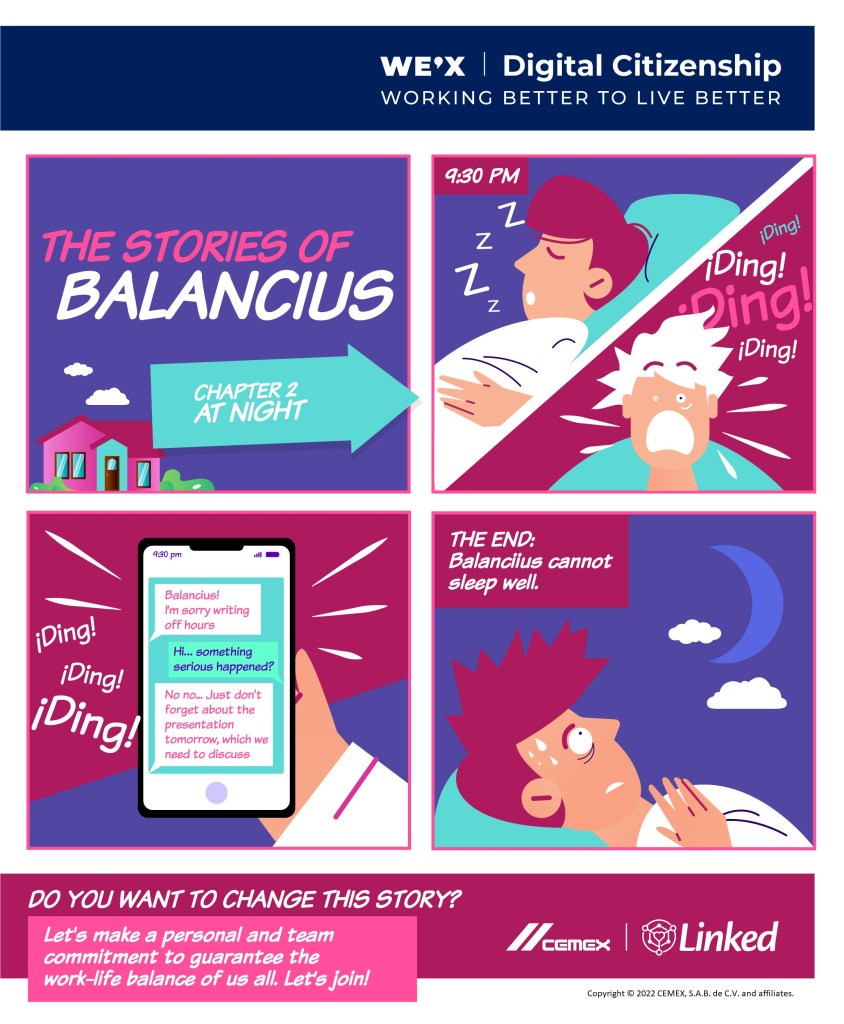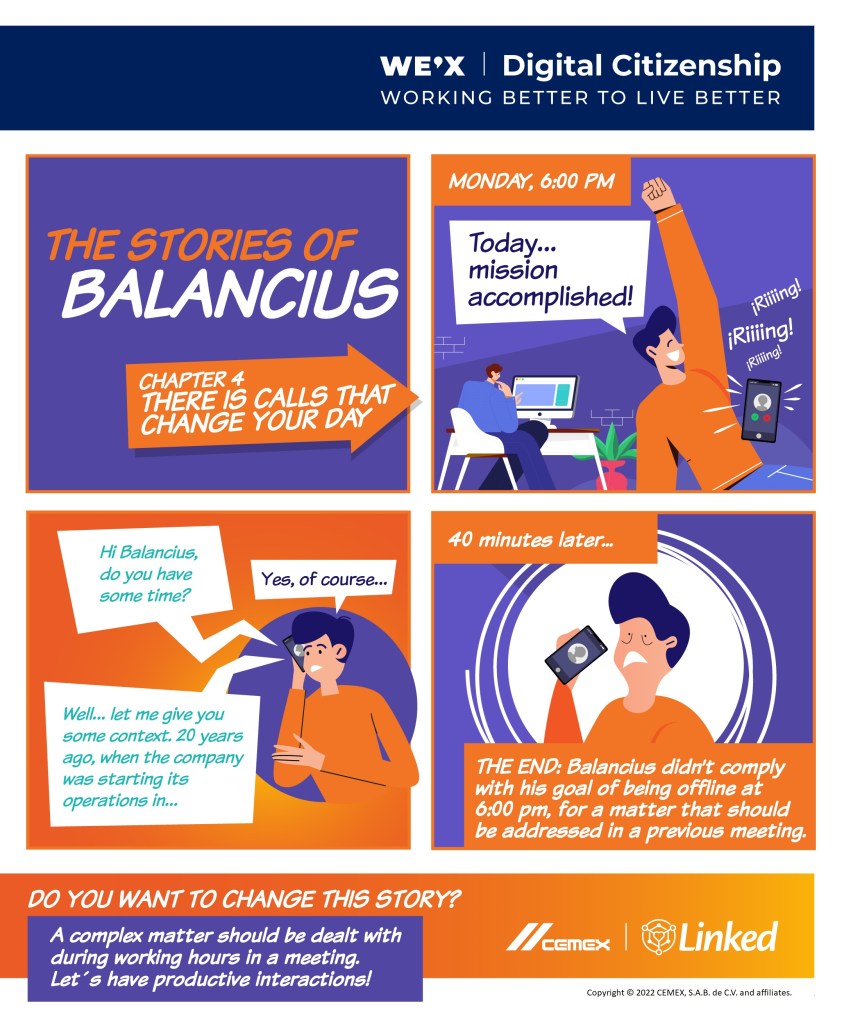
Here’s how CEMEX preserves work-life balance across its global workforce
Vice President of Organization and Human Resources Alberto de Armas describes how good "digital citizenship" protects employees' time, personal data, and right to disconnect
While organizations adjust to the newfound flexibility of the pandemic era, they’re also reinventing what it means to “go to the office.”
No longer bound to a physical location, the office has expanded to an ever-present digital dimension, blurring the dividing lines between work and personal life.

Even prior to the pandemic, “we saw the limits between work and home erasing, partially because of the significant increase in the use of technology in our day-to-day interactions,” says Alberto de Armas, Vice President of Organization and Human Resources at CEMEX, a global leader in the building materials industry.
“We knew losing work-life balance degrades productivity, so we realized we needed to help our people set some clearer boundaries,” de Armas explains.
But how do you set up clear structure and guardrails when the office is virtual, and always on?
CEMEX outlines this structure by defining and promoting what it means to be a good “digital citizen.”
Digital citizenship defined
CEMEX launched its digital citizenship model in 2021 as an output of a cross-organizational task force that convened to support flexible work. The task force identified three problem areas across its global workforce of 46,000: protecting employees’ personal data, limiting work communication to business hours, and eradicating the “always on” mindset.
“Technology has proven a great tool to remain visible and accountable,” says Terri Charles, CEMEX’s Head of UK Service Centre. “Our challenge is to leverage it, ensuring work-life balance while being really productive in working hours.”
Those problem areas became the three pillars of the digital citizenship model, which CEMEX dubbed “Your data,” “Your time,” and “Your right to disconnect.” The policy advises simple everyday practices for each pillar.
The following guidelines are disseminated across the CEMEX workforce to codify specific behavioral norms. At the same time, individual teams are encouraged to establish team norms that outline expectations for core collaboration hours and focus time.
Protecting your time
Book meetings only when needed. Ask yourself, “Is an email, chat, or brief enough for this topic?”- Invite only those who really need to attend.
- Respect availability as marked on people’s calendars.
- Aim for 30 minutes, with a 5-minute buffer time to transition between meetings.
Some self-management practices that help protect your time:
- Allow for focus time.
- Turn off pop-ups and notifications.
- Be present and avoid multitasking.
Protecting your right to disconnect
Avoid communication or expectation of fulfilling work-related requests on
- Workdays from 7 p.m. to 7 a.m.
- Weekends.
- While on PTO.
Some self-management practices to help protect your right to disconnect:
- Inform others of your time off using the “Out-of-Office” functionality on email.
- Limit incoming out-of-hours email traffic.
- Block lunch time during weekdays.
The three steps to rolling out the digital citizenship program at CEMEX
CEMEX leadership understood that cultural change across a large and globally distributed employee base takes time and effort. To get there, CEMEX leaders laid out a three-step process:
Step 1: Set the tone
The act of documenting guidelines, complete with executive sponsorship, creates an identity for the program that employees can rally around.
Step 2: Ensure global understanding
A full-force communications campaign on the Digital Citizenship launch, its purpose, benefits, and expectations ensures broad awareness. The team outlines CEMEX-wide messages about collaboration rules through charts like this:
Step 3: Reinforce the message
Message reinforcement happens through ongoing events and internal communications such as
- Employee onboarding.
- Leadership development programs.
- Live sessions with leaders to talk about the guidelines and gather reflections on what they mean to employees.
- Digital learning assets.
- Employee discussions in internal collaboration channels.
- Annual and pulse surveys of employees and crowdsourcing through a listening platform called Remesh.
- Emails with tips and tricks featuring creative and engaging multimedia, like videos, infographics and a comic strip series like the one below.

Cultural change starts at the top. Leading by example is critical.
A year and a half after launching the initiative, de Armas says CEMEX employees and leaders demonstrate digital citizenship through their everyday interactions. “It’s in our vocabulary.”
The ongoing change management and communications efforts were helpful for embedding the program and keeping it top-of-mind for employees. But leaders at CEMEX also understand the importance of personally modeling these behaviors themselves.
“High-level leadership courses have been instrumental to encourage digital citizenship at CEMEX,” says de Armas. “It’s not uncommon to hear a leader saying, ‘You’re not being a model digital citizen’ to others not following the practices. Or, ‘You need to set an example, go and disconnect.’”
